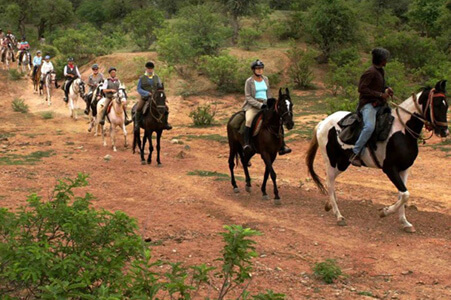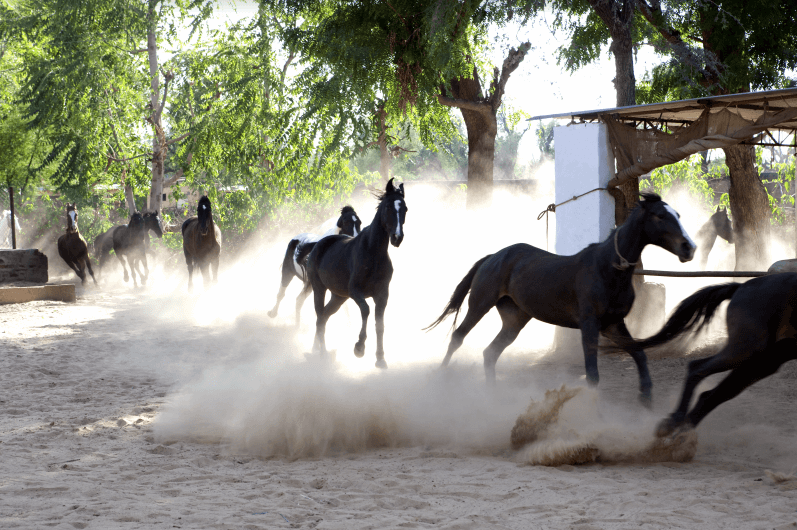Horses and heroes have been intertwined in our collective conscience for aeons. Adventures of the yore usually started with the protagonist riding on horseback with the wind in the hair, desert stretching to the horizon…
Fast forward to today, adventure still has not changed much, at least in the wild west of Rajasthan where the desert and forest are in a constant tug of war with the frontline shifting all the time. The Indian Silk road traversing through the region made it obligatory to tame the terrain, to move persons and goods quickly across this unforgiving land.
Like Sindbad, every adventure comes tangled with dangers and the romance attached to it. The strong of heart and gut amongst us still feel their soul stirred by the call of an adventure in the unknown, untamed country. With a desert larger than many countries, teeming wildlife, mountains and valleys of hard acacia trees, ancient tribes frozen in time and raging passion for horses, Rajasthan is the perfect backdrop for such a timeless adventure.
Just to familiarize ourselves with the central character of our epic, the handsome horses of the North West of Indian sub-continent. Predominantly three breeds of Indian horses trample these lands, Marwari, Kathiawadi and Sindhi, each from a definite region. The Sindhi horses belong to the Sindh province, most of which today lies in Pakistan. The Kathiawadi traces its roots to a desert tract in the state of Gujrat called Kathiawar.
The true protagonists of our story hail from the Mewar region of Rajasthan called Marwari horses with its signature inward-turning ears and a hardy frame and build. Perfected by centuries of strict breeding practices by the traditional rulers of Mewar, Marwari horses are the scions of pride, a living legacy of a glorious time. Many royal families and households competed against each other on their horse breeding skill and prowess. But mechanization brought a new wave of transport, rendering redundant the resplendent beasts born of the wind.
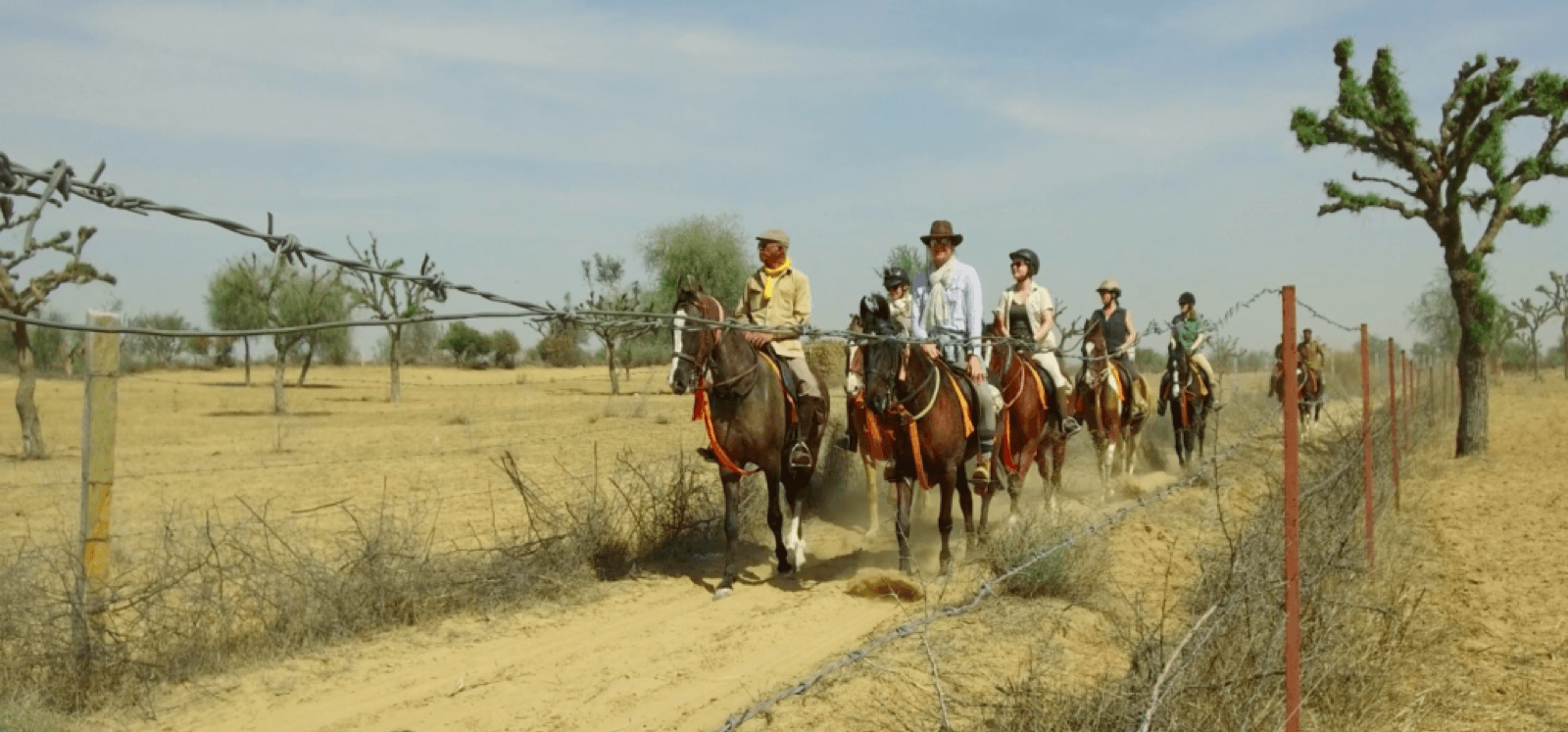
With three predominant breeds of indigenous horses, north-west India is an equestrian paradise. The breeds are Marwari, Kathiawadi and Sindhi. The Kathiawadi run from the desert tract of Gujrat called Kathiawar. Most areas where the Sindhi breed is found are now a part of Sindh Province of Pakistan. The Marwar region (erstwhile Jodhpur State) of Rajasthan is where Marwari horses were bred and proliferated, giving the region a military edge due to their toughness, evolved to sail these tough terrains with ease.
The powers of Marwar region adhered to strict breeding to retain purity and hardiness. By the beginning of the 12th century, Marwari horses had come into their own. Marwari horse is identified by its signature inward-turning ear tips. Born in all equine colours, Marwari horses are some of the most handsome beasts. Characterized by loyalty and robustness, Marwari horses are objects of intense passion at Roop Niwas Kothi, right from the days of its founding fathers. Almost a century ago, Rawal Madan Singh made Roop Niwas Kothi his permanent home along with reviving the stables and by extension, the Marwari horses. But with waxing and waning of interests, the stables needed attention, which the present occupants provided, thus a proper breeding stable was established twenty odd years ago. Predominantly populated by Marwari horses, there are a few Kathiawadi and Sindhi horses too.
Roop Niwas Kothi has spread the fame of these tough horses across the globe by proudly sponsoring Marwari horses for the past many years in the international endurance race of 60 to 100 Kms conducted in Shekhawati. The stables here have welcomed horse lovers from France and the UK to enjoy the grace, fury and speed of Marwari horses.
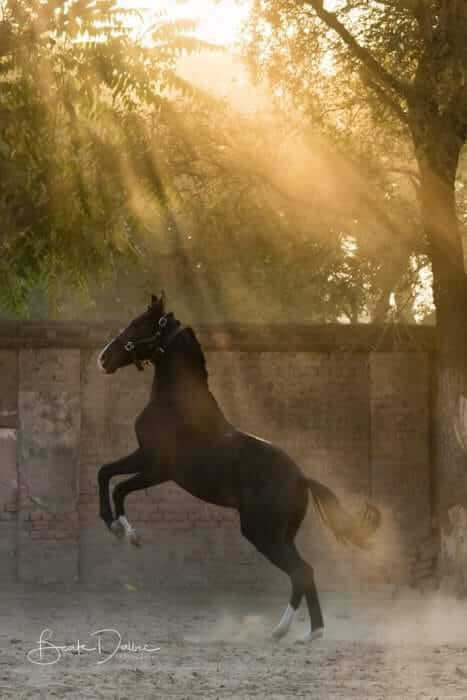
Roop Niwas Kothi is home to one of the largest stud farms with the best Marwari horses in India. For decades Rawal Devendra Singh has conducted extreme adventure rides on Marwari horses. Patrons swear by the freedom and immersion of the true rural experience of Shekhawati on horse safaris. The stables have also furthered the cause of science and research by opening their stables to researchers studying the Marwari horses, with insight into the best-maintained record of lineage and pedigree of Marwari stallions and mares.
The excitement of horse safari is an irreplaceable, inimitable experience. The stables at Roop Niwas Kothi offer myriad adventures on the horseback, including short and long rides, be it for the day or many. Tips and tricks of horse riding, for novice bumblers to seasoned riders, is personally overseen by Rawal Devendra Singh.
Further to the equestrian indulgences, the tranquillity and peace offered on the luxurious gardens of Roop Niwas fascinate horse lovers and bird watchers alike. The artistic wonder that Nawalgarh is, with its thousands of frescos in hundreds of Havelis is a whole different digression and an experience of many days.
Riding back, here are a few rides, explorations, multi-day horse safaris that you may indulge in.
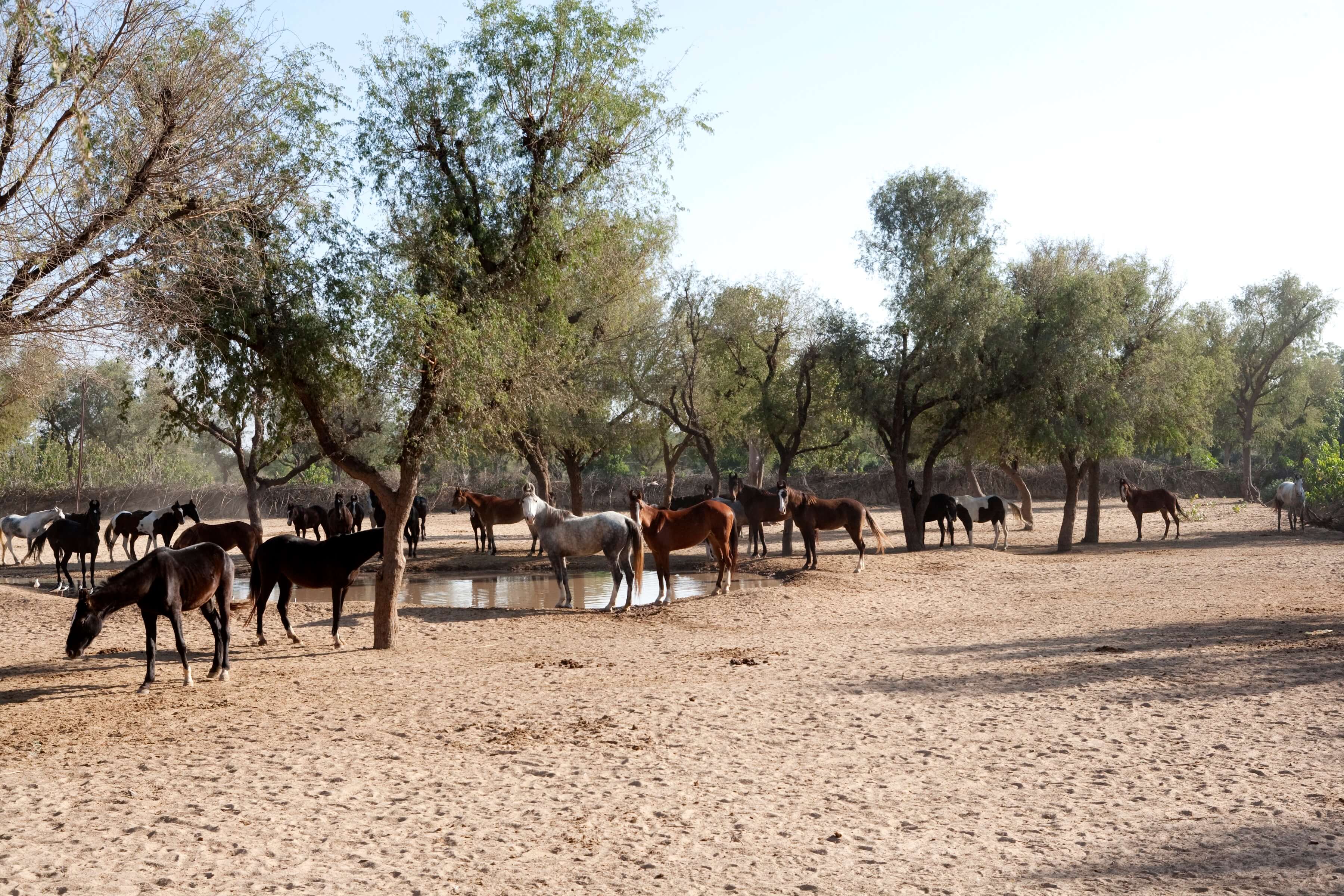
The Day Rides include:
Individual Lessons: Personally conducted by the owner on seasoned horses.
Half-Day Rides: Explore the countryside through small villages and semi-arid expanse. 2.5 – 3 Hours
Full-Day Rides: Full day adventure on Horseback exploring the countryside and old temples. Enjoy the lunch at one of the many picturesque spots of the region. 4.5 – 5 hours
Farm Experience: Casual ride to the Hotel’s farm whilst exploring the countryside and learning the ways of organic farming and livelihood of the region. Followed by Tea, the perfect way to begin or end your day.
The Multi-day Safaris include:
Balotra Horse Fair Safari – Jodhpur To Tilwara
In southwest Rajasthan 145 Kms. From Jodhpur on the banks of the dry seasonal river, Luni is a small village “TILWARA”. The closest town 19 km. from Tilwara is Balotra falling in district Barmer of Rajasthan. It was here many centuries ago that the famous ruler MALLINATHJI ruled. He is worshipped as a divinity. The temple to Mallinathji is located on the opposite bank of the dry river Luni from Tilwara village. Every year in the first fortnight of the Hindu month of “Chaitra” a large fair is held here. Horses, camels, bullocks and in the last phase donkeys come to the fair. The fair according to the Christian calendar falls in the month of March./March. The owners of the animals camp in the dry riverbed. They may use their carts or make temporary dwellings from acacia bushes. The prosperous horse owners and traders bring their tents and staff along.
The animal owners occupy the dry riverbed for many kilometres. They live & trade in these temporary dwellings called “AALI” in the local dialect. At sunrise and sunset, horse owners display their horses riding up and down the riverbed. Audiences and buyers cheer them. Anybody can accost the riders and bid or negotiate the deal. Now the state government organizes horse-judging competitions. The function last year was presided by The Maharaja of Jodhpur. The fair is held in the heartland of our Indian breed of horses. The ‘Marwari’, some very good horses come to the fair. People from far away states such as Punjab, Uttar Pradesh, Gujarat & Maharashtra come to purchase animals to this fair. It is a rare spectacle to see 5 to 7 thousand horses, 15 to 20 thousand camels and about 30 to 40 thousand bullocks and cattle and their owners in the flat expanse of the dry sandy riverbed. The market places, which come up, sell all kinds of goods. Camel carts, water tanks, earthenware utensils, rugs, ropes, horse tack, camel saddles, colourful girdles, beds, doors, brass, copper and steel pots and pans. Many stores of recycled material like conveyor belts, parachute materials, musical instruments & all things which villagers would buy.
The fair is a photographer’s paradise. It takes a visitor to the atmosphere of biblical times. One feels to have walked into the past. This fair is much larger than the famous Pushkar or Nagaur camel and cattle fair and is not frequented by tourists. At sunset and sunrise, there is a spectacular display of horse riders on the flat riverbed. This horse fair is unhindered and uncommercialized remaining the same for generations.
